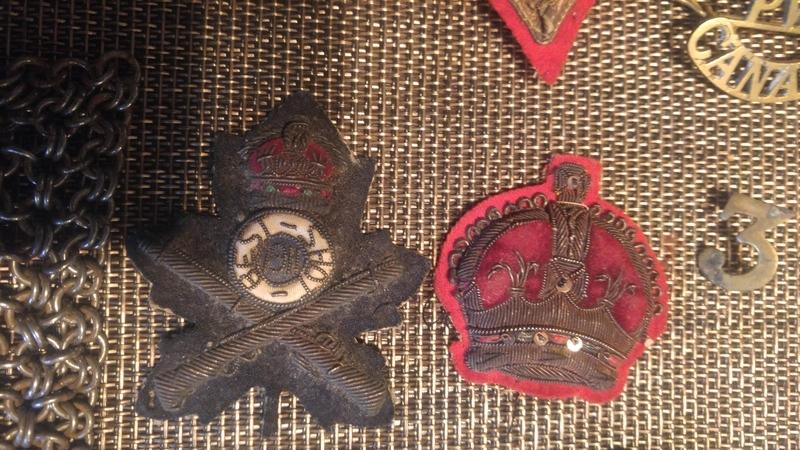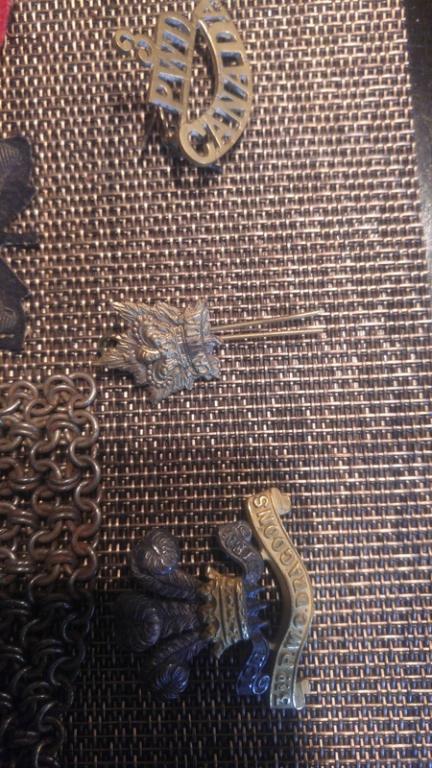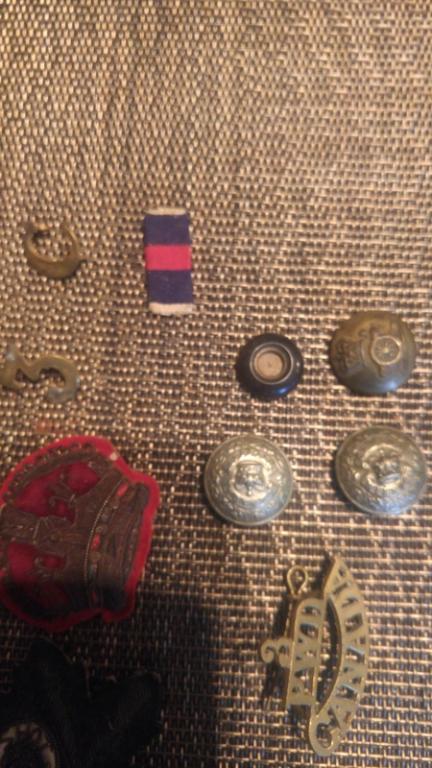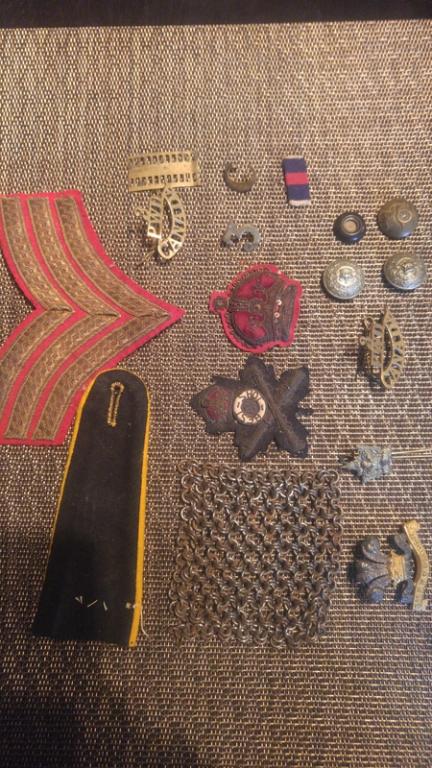My Uncle passed away recently and I was given a box of items he had. He was never in the military nor was anyone in his extended family to the best of my knowledge (great uncles, aunts, etc).
It appears that this stuff is pre-WW1 and likely froma Regiment in Peterborough (where we live).
The one thing i'm most curious about is the small patch of what appears to be chain mail, what was the purpose of this?
Also the patch that has Best Shot 1911 is pretty special.
Sorry about the sideways photos, Photobucket is having some issues.
 Information
Information

Warning: This is a relatively older thread
This discussion is older than 360 days. Some information contained in it may no longer be current.
- Knowledge Library

- MKL Entry of the Month
- Australia
- Austro-Hungarian Empire
- Canada
- Czechoslovakia
- Denmark
- Finland
- France/Belgium
- Germany
- Italy
- Japan
- Norway
- Russia
- South America
- Sweden
- Switzerland
- Turkey
- United Kingdom
- United States
- Yugoslavia
- Is my rifle authentic or a fake?
- Jay Currah's Lee Enfield Web Site
- On-line Service Records (Canada)
- Technical Articles/Research
- Forum
- Classifieds

- What's New?
-
Photo Gallery

- Photo Gallery Options
- Photo Gallery Home
- Search Photo Gallery List
-
Photo Gallery Search
- Video Club

- iTrader













 Register To Reply
Register To Reply
